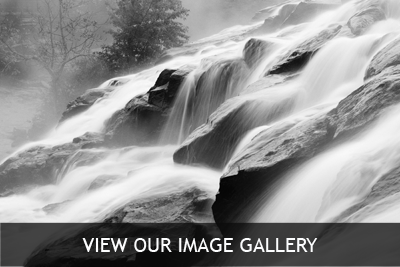 The Camera Specs That Matter
The Camera Specs That Matter
Monte is often asked, “What camera should I buy?” So, as a twist on our usual Photos For Healing Newsletter, we are sharing this great article below that explains what matters when choosing a camera to help you capture your best image.
This article was originally published by by Tim Moynihan, PCWorld
A decade into the digital camera revolution, there are still lots of people who believe that more megapixels mean better cameras. But it’s more important to look for features that will help you take high quality photos quickly, like quick startup time and easy to use controls.
Cameras: Specs That Don’t Matter
Digital camera
Digital zoom: Digital zoom technology is getting better, but a camera’s “digital zoom,” “enhanced zoom,” “intelligent zoom,” or other creatively rebranded feature still does the same thing as it always has: It crops your image in the center and enlarges that cropped area, reducing the resolution of the resulting image. You can do the same thing with your photos through image-editing software, and if you need to enlarge part of a photo during playback, you can do that with the camera’s zoom controls without affecting the source image. Related: look up “Photo Resizing Tricks”
Digital image stabilization: We’ve seen cameras with some incredibly effective stabilization systems–optical and mechanical stabilization systems, that is. Digital stabilization? Meh, not so much.
“Digital stabilization” systems normally work in one of two ways: They boost the ISO sensitivity to noise-inducing levels (allowing the camera to use a faster shutter speed), or they work in video mode in much the way a digital zoom does, by cropping and enlarging the image in the center of the frame, and then using the rest of your scene as a buffer zone to ensure that the center of the video looks somewhat steady. We’ve rarely been impressed with digital stabilization alone, but cameras that use a combination of optical/mechanical and digital image stabilization are usually quite effective. Just be wary of cameras that offer digital stabilization only.
LCD screen size and resolution: Like it or not, point-and-shoot cameras have largely done away with optical viewfinders, and LCD viewfinders that measure 3 inches or more on the diagonal are now the norm. Such screens are great for reviewing photos and performing basic shot composition, but you’ll get over that extra real estate quickly. Big screens drain the camera’s battery faster, and a sharp, high-resolution LCD can make image quality look better than it actually is. Your images may appear noticeably more soft or blurry at full size, but you won’t know that until you offload your pictures to a computer–which means you’ve already missed the chance to reshoot on the spot.
In general, it’s best to use your LCD for shot composition only, as color fidelity, sharpness, and exposure levels may look much different when you’ve offloaded your photos. Use your camera’s histogram!
Cameras: Specs That Sometimes Matter
Megapixels: You shouldn’t ignore megapixel counts entirely, but keep in mind that this spec matters much more in the realm of DSLRs and large-sensored cameras. Many people confuse high megapixel counts with indicators of how good a camera’s image quality will be, but in reality it’s simply a measure of how large you can view, resize, or print an image without seeing a noticeable decrease in resolution. Megapixels translate to image size, not image quality, so you should factor in a camera’s megapixel count mainly if you plan on making large prints or cropping and enlarging portions of an image.
In small-sensored cameras, such as point-and-shoots and camera phones, a higher megapixel count often leads to noisier photos. Higher megapixel counts also translate to larger file sizes, which takes a toll on your storage card space and your ability to share images electronically without first reducing them in size. DSLRs have the sensor size and powerful optics to capture high-quality images at high resolution, but most point-and-shoots struggle with image quality at high megapixel counts.
High-definition video recording: You may be drawn to a bargain-bin pocket camera because it shoots “HD video,” but not all “high-definition” video is of the same caliber–even if it’s billed as “1080p.” Similar to megapixel counts, “720” and “1080” simply refer to the number of horizontal lines the video footage will scale to on an HDTV set. The actual video quality depends on a lot of separate factors: the recording bitrate, the quality of the lens and sensor, the frame rate of the video capture, progressive versus interlaced video, file compression, and other variables.
Video performance is hard to generalize across the board; it depends on the individual camera, and we’ve seen great (and not-so-great) high-definition video shot with both point-and-shoot cameras and DSLRs.
ISO: This is another spec that gains much more value in the world of DSLRs. Most point-and-shoot cameras now have astonishingly high ISO sensitivity settings–usually up to ISO 6400 or even ISO 12800–but their small sensors heat up quickly and add a lot of visual noise starting at around ISO 400. A DSLR handles the upper reaches of the ISO range much better, thanks in large part to the bigger (and cooler) surface area of its sensor. If low-light shots and fast action are important to you, a DSLR with high-ISO settings is a good fit. But if you’re looking at point-and-shoots, consider one with a dedicated low-light mode that does something more than jack up the ISO.
Cameras: Specs That Always Matter
Digital camera
Physical buttons for manual controls: If you want to get serious about photography, you don’t need to buy a DSLR right out of the gate. You can save money and still learn the ropes by buying a compact camera with full manual controls for aperture, shutter, focus, and exposure compensation. It’s a good idea to experiment with those controls and gain experience before you spend big bucks on a digital SLR. Look for a camera with traditional buttons and dials for manual controls for a couple of reasons: It will make using those same controls on a DSLR more intuitive, and touchscreen manual controls just aren’t ready for prime time yet.
Fast startup time and burst mode: Shutter lag isn’t much of a problem anymore. By and large, every camera autofocuses quickly once you half-press the shutter button, and snaps a shot immediately thereafter. That said, modern cameras can still make you miss a shot in a few significant ways. A delayed startup time can slow you down, so look for a camera that lets you power it on and shoot within about a second and a half. In some cases you may need to disable the “splash screen” that displays after you turn the camera on, so check whether the camera lets you turn that off.
A camera’s “burst mode” or “continuous shooting” speed is also an underrated spec: Even if you’re not a sports or action photographer, the ability to fire the shutter continuously can help you capture the perfect shot of a hyperactive pet, a fidgety baby, or another finicky subject. Look for a burst mode of 3 frames per second or greater, but keep in mind that some cameras’ burst modes reduce the resolution of each photo to increase processing speed.
Features that fit your needs: If you just want a car to drive to the local grocery store at a maximum speed of 35 mph, it’s pointless to buy a Ferrari. Likewise, the most important thing to think about before making a camera purchase is how you’ll be using the camera and which features best serve your needs (and your budget).
Sports and wildlife shooters will want a long-zoom lens and a fast burst mode. If you’re planning on taking your camera on vacation, you might be best served by a ruggedized model that can shoot underwater, or a GPS-enabled camera that geotags your photos for mapping them later. If you want a high-quality camera that’s more portable than a DSLR, consider a compact interchangeable-lens camera or a point-and-shoot with manual controls. And if you just want something that’ll offer significantly more than your average cell phone camera, look for manual controls, a fast burst mode, or a larger-than-average optical zoom range.
The good news is that cameras tend to hold their value longer than other forms of electronics do, so when you feel it’s time to upgrade, you can probably fund a generous chunk of a new purchase by selling your old gear.
For a PDF version of this Newsletter, Click Here photos-for-healing-newsletter-camera-specs-that-matter


